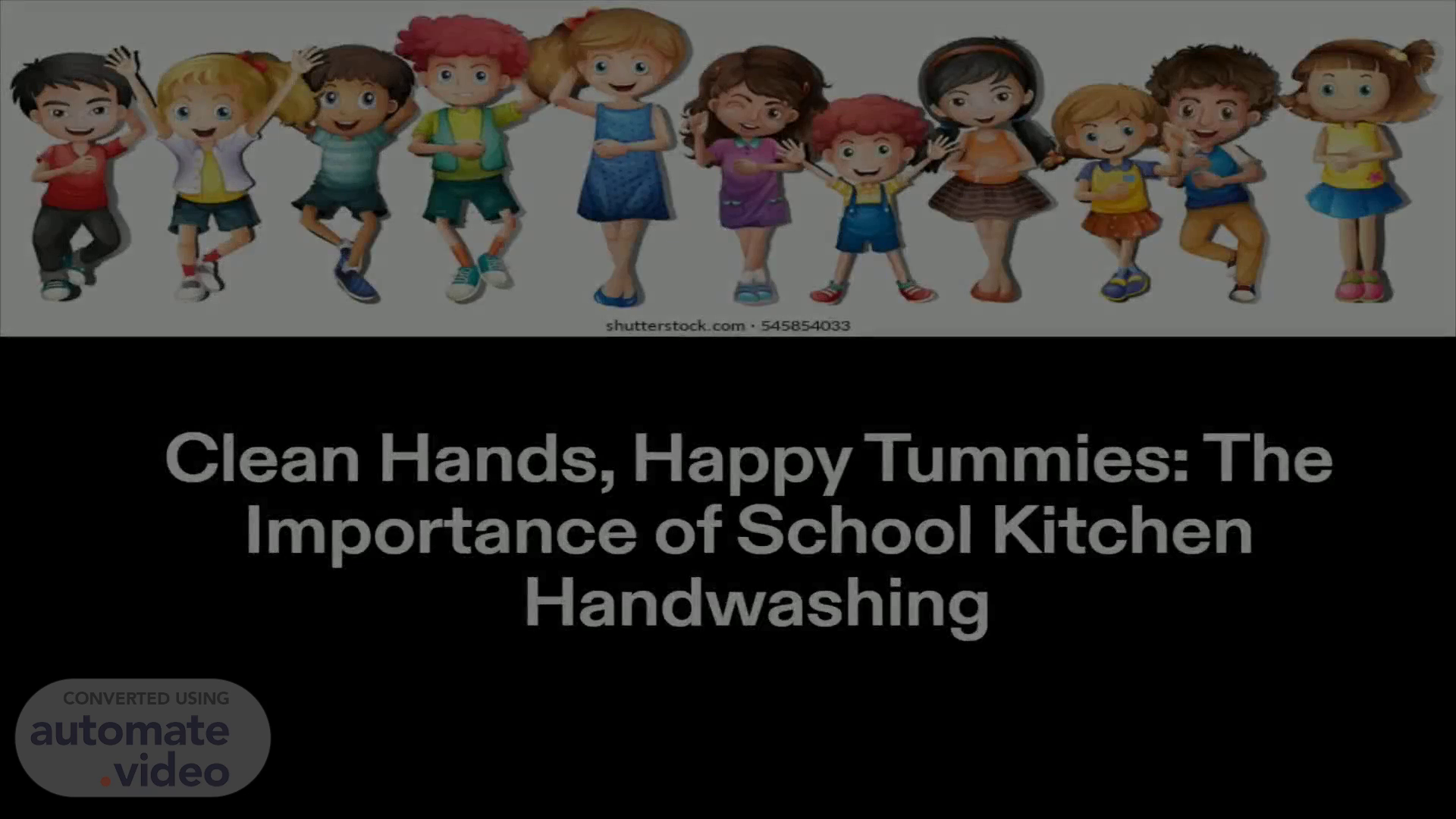
PowerPoint Presentation
Scene 1 (0s)
[Audio] Clean Hands, Happy tummies, The importance of school kitchen handwashing.
Scene 2 (8s)
[Audio] Hand wash sink station set up. Must have hot water of 100° Fahrenheit, Hand soap, paper towels, Trash receptacle within three feet, hand washing sign, Sink for hand washing only sign.
Scene 3 (24s)
[Audio] Why hand washing is critical in school kitchens. Handwashing is critical in school kitchens to prevent the spread of harmful bacteria and viruses that can cause foodborne illnesses. According to the center for disease control and prevention, the cdc, handwashing is the single most effective way to prevent the spread of infection. . In a busy school kitchen, it can be easy to forget to wash your hands or to cut cotners when doing so. However, failing to follow proper handwashing procedures can have serious consequences. For example, a recent study found the nearly half of all foodborne illness outbreaks in schools were caused by poor hand hygiene among staff members. By making handwashing a priority school kitchen staff can help keep students safe and healthy..
Scene 4 (1m 16s)
[Audio] When Should You Wash Your Hands? Handwashing is critical in school kitchens, and it's important to know when exactly you should be washing your hands. Here are some key times: - Before handling any food or utensils - After handling raw meat or poultry - After using the restroom - After coughing, sneezing, or blowing your nose - After touching garbage or cleaning up spills By following these guidelines, you can help prevent the spread of harmful bacteria and keep everyone in the kitchen safe. Remember, handwashing is one of the most effective ways to prevent the spread of illness in a school kitchen..
Scene 5 (2m 2s)
[Audio] The Right Way to Wash Your Hands First, wet your hands with Hot water of 100 degrees Fahrenheit. Cold water won't be as effective in removing bacteria. Next, apply soap to your hands and exposed fore arms, then rub them together for at least 20 seconds. Be sure to lather the backs of your hands, between your fingers, and under your nails. Finally, rinse your hands thoroughly with warm water and dry them with a clean paper towel or air dryer. Avoid touching any surfaces with your clean hands. Use the same towel to turn of the water. Dispose of towel in trash recepticle with in 3 feet of hand sink..
Scene 6 (2m 50s)
[Audio] Common Handwashing Mistakes to Avoid One of the most common mistakes that school kitchen staff make when washing their hands is not using enough soap. It's important to use a sufficient amount of soap to effectively remove dirt and germs from your hands. Another mistake is not washing hands for long enough. Experts recommend washing your hands for at least 20 seconds to ensure that all germs are removed. This can be timed by singing the "Happy Birthday" song twice..
Scene 7 (3m 25s)
[Audio] The Consequences of Poor Handwashing Poor handwashing in school kitchens can have serious consequences for both students and staff. In fact, according to the Centers for Disease Control and Prevention (CDC), nearly 22 million school days are lost each year due to bactiria and virus caused illness. Poor hand hygiene can lead to foodborne illness outbreaks. The CDC estmates that in 2022 nearly 48 million people in the United States were infected by a foodborne illness. In one study, researchers found that inadequate handwashing was a contributing factor in over 49% of foodborne illness outbreaks in school settings. These outbreaks can have serious consequences, including hospitalizations and even death..
Scene 8 (4m 17s)
[Audio] Making Handwashing a Priority in Your School Kitchen To make handwashing a priority in your school kitchen, it's important to first establish clear guidelines and expectations for staff. This includes providing training on proper handwashing techniques and reminding staff of the importance of following these procedures consistently throughout the day. Another key step is to ensure that handwashing stations are easily accessible and well-stocked with soap, paper towels, and other necessary supplies. Consider placing reminders near sinks or in high-traffic areas to encourage staff to wash their hands frequently..